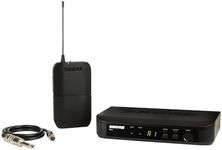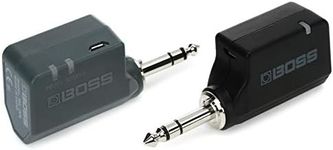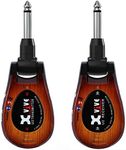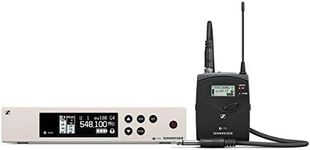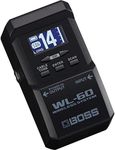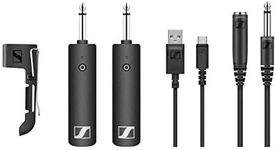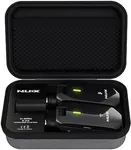Buying Guide for the Best Guitar Wireless Systems
Choosing a guitar wireless system can really free up your movement on stage or during practice, letting you play without worrying about cables getting in the way. The right system will give you reliable sound quality, minimal interference, and enough range for your needs. When picking a wireless system, it's important to understand the main features and how they relate to your playing style, environment, and instrument. By focusing on the key specifications, you can find a system that matches your needs and helps you perform at your best.Frequency BandThe frequency band is the range of radio frequencies the wireless system uses to transmit your guitar signal. This is important because different bands can be more or less crowded, which affects how likely you are to experience interference from other devices. Common bands include VHF, UHF, and 2.4GHz. VHF is older and more prone to interference, UHF is widely used and generally reliable, while 2.4GHz is popular for its global compatibility but can be crowded due to Wi-Fi and Bluetooth devices. If you play in places with lots of wireless devices, a UHF system might be more stable, but for home or small venues, 2.4GHz can be convenient and easy to use.
RangeRange refers to how far you can move from the receiver before the signal starts to drop out. This is important if you play on large stages or like to walk into the crowd. Short-range systems (up to 30 feet) are fine for small rooms or home use, mid-range (30-100 feet) works for most venues, and long-range (over 100 feet) is best for big stages or outdoor events. Think about where you usually play and pick a system with enough range to cover your space comfortably.
LatencyLatency is the slight delay between when you play a note and when you hear it through the speakers. Low latency is important for keeping your playing in sync, especially if you play fast or with other musicians. Latency under 5 milliseconds is generally unnoticeable, 5-10 milliseconds is acceptable for most players, but anything higher can feel distracting. If you’re sensitive to timing or play complex music, look for a system with the lowest latency possible.
Battery LifeBattery life tells you how long the transmitter and receiver will work before needing a recharge or new batteries. This matters for long gigs or rehearsals. Some systems use rechargeable batteries, while others use standard AA or AAA batteries. Short battery life (under 4 hours) is fine for practice, medium (4-8 hours) suits most gigs, and long (over 8 hours) is best for all-day events. Choose based on how long you typically play and whether you prefer recharging or swapping batteries.
Form FactorForm factor describes the physical design of the transmitter and receiver. Some systems use small plug-and-play units that connect directly to your guitar and amp, while others use belt packs with cables. Plug-and-play is convenient and quick to set up, but belt packs can be more secure and less likely to get bumped. If you want simplicity and minimal gear, go for plug-and-play; if you move a lot or play energetic shows, a belt pack might be more reliable.
ChannelsChannels are the different frequency options you can select on your wireless system. More channels mean you can avoid interference by switching to a clear frequency, which is useful if you play with other wireless systems or in busy environments. Systems with just a few channels are fine for solo practice, but if you play in a band or at events with lots of wireless gear, more channels give you flexibility and reliability.
Audio QualityAudio quality refers to how accurately the wireless system transmits your guitar’s sound. This is affected by the system’s frequency response and signal-to-noise ratio. A wider frequency response means your tone stays true, while a higher signal-to-noise ratio means less background hiss. If you care about preserving your guitar’s tone, look for systems that advertise full-range audio and high signal-to-noise ratios. For casual playing, most modern systems will sound good enough, but for recording or professional gigs, higher audio quality is worth considering.




